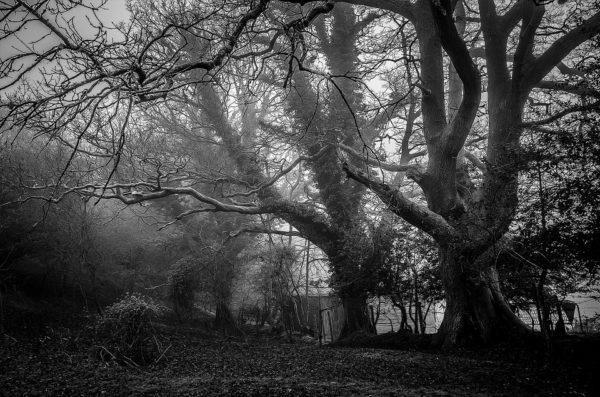
by Gordon Cooper
I have come by the green and winding road That leads from the town to the gods’ abode,- To the ancient shadowy place apart, Where spring is born in the woodland’s heart, And over and over the ages through The spirit of joy is made anew. O world of glory and toil and gleam, Made out of passion and dust and dream! On the gladsome quest by my student vow, I am come to this threshold of beauty now, Where Nature sits with inscrutable eyes Guarding her temple of mysteries. Who knows but the magical master key, As Plotinus taught, may be ecstasy, And led by the sheer elation of love And the intuitions we cannot prove,- We may pass in a moment fleet and fine Into the realm of the divine! In such a grove when the world was young Great hymns to the god of the wood were sung. And worshippers in procession came With garlands and pipes to praise his name, Before ever the world grew sad and cold, When beauty its eloquent story told In movement and rhythm and color and line, Where sense could interpret and heart divine The hidden purpose, the ceaseless power, Enhancing the fair world hour by hour. Is it so idle to believe That unfearing rapture may perceive, Where the wonder rests on river and tree, The form and features of deity? To the doubt-free soul even now and here What radiant presence might appear, Living and warm, in the very guise It wore in the glad young centuries! This old gray stone might almost be The altar of some divinity. Behold, I come with gifts in hand, As ancient usages demand, And wreathe the stone and lift the prayer That shall the suppliant’s faith declare. O Spirits of Earth, will ye not draw near, If the gift be clean and the heart sincere? Come forth in loveliness and power And touch with glory the present hour!
~ From “Earth Deities, a Masque” by Bliss Carman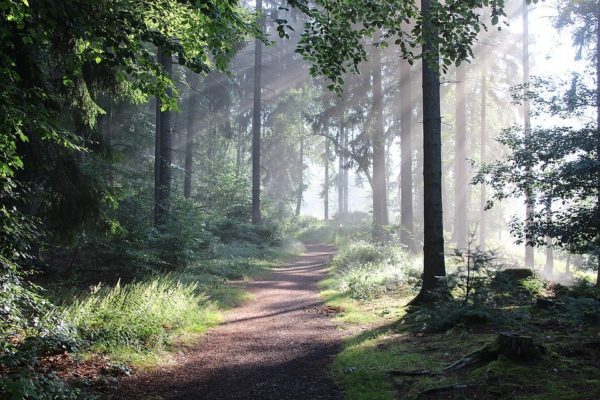 Welcome to this essay on Druid Crafts, which celebrates the traditional skills that are connected to the Druids in song, story, and reports from the classical authors. What is druidry? Is it a description of a druid from the writings of a single Greek or Roman author? Is it a recreation of religious practices (that may have never existed) following careful analysis of the tales, written down or created hundreds of years after the introduction of Christianity to Ireland? Is it the revivalist druidry of the middle ages, the antiquarians, the poets of the Eisteddfod, or is it limited to the modern descendants of the antiquarians, the Revivalist EuroPagan Druids? Is druidry merely the sum of the local folk customs and practices of Ireland, Scotland and Wales that relate to wind, wood and waters? Is it valid to call oneself a druid and ignore all of the traditions and ideas about druidry? Any answer to this question must be a personal one, based on the truths that an individual can apprehend and bring to fruition within the world.
Welcome to this essay on Druid Crafts, which celebrates the traditional skills that are connected to the Druids in song, story, and reports from the classical authors. What is druidry? Is it a description of a druid from the writings of a single Greek or Roman author? Is it a recreation of religious practices (that may have never existed) following careful analysis of the tales, written down or created hundreds of years after the introduction of Christianity to Ireland? Is it the revivalist druidry of the middle ages, the antiquarians, the poets of the Eisteddfod, or is it limited to the modern descendants of the antiquarians, the Revivalist EuroPagan Druids? Is druidry merely the sum of the local folk customs and practices of Ireland, Scotland and Wales that relate to wind, wood and waters? Is it valid to call oneself a druid and ignore all of the traditions and ideas about druidry? Any answer to this question must be a personal one, based on the truths that an individual can apprehend and bring to fruition within the world.
That said, there are some ideas that run through most of these conceptions of druidry. Firstly, there is the notion that druids had something important to say about the natural world, could converse with it, and find its secrets by their arts. Secondly, that their grammary (poetry, geometry and the entire body of lore held by classical druids), both dark and fair, could change the world by calling forth the sacred fires of truth and creation.For the past three hundred years this has been the conception of druids most discussed and accepted in the west, while scholarship vacillates each decade over what can and cannot be known about pre-historic druidry. Taken on its own terms, druidry requires a visceral and studied participation in the world. It is not to be found on the Internet – on websites, in chat rooms or on e-mail lists. In net arguments, the endless recycling of half understood information, and the futile redaction of nature that is so distant from trees, mushrooms, sea, shore and sky can only convey a vague and distorted simulacrum of the truth of a sacred spring nourishing a thorn tree, let alone the rest of the greening fire of the world.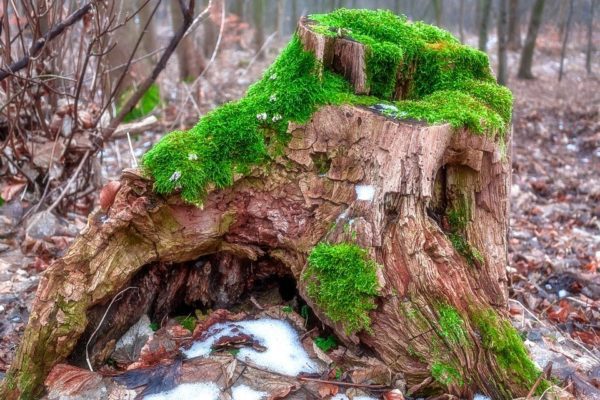 This article is a finger pointing at the forest, and not the forest itself. Druidry must be discovered and realized in tree planting parties, outdoor camps with other druids, songs in the forests or in the high, windy places of rock and lonely desert, within the speech of birds that gather at dusk, the beginning of the druidic “day”, and in the assembly of seer-singers around a fire at night. The above should not be construed as an argument in favour of a druidry that is anti-intellectual. Far from it, druidry depends on a keen awareness of Traditions, Song, Consciousness and Nature in all of its manifestations, beginning and remaining rooted in the place that the student lives, breathes and meditates. It does a potential druid no good to memorize endless and speculative lists of Ogham “trees” while ignoring the cactus or mountains in their own neighbourhood. Every land is sacred and has its own stories to tell. Not only in Ireland and Wales can the imbas, awen or grail be found, but in the whole of the greening and browning earth. It whispers in canyons in Colorado, teases one in the waving grains of the prairie, flashes in the evening light of the savannah and dances in tornados made by the gods of weather. Pounding waves have more to teach a druid than the glow of a thousand computer screens. Living with Nature, tracing and appreciating the sacred geometry of leaves unfolding in fractal patterns and weathered rocks, singing with a murder of crows at dusk is part of druidic practice, as is an appreciation of the land-naming tales of all places, not merely Ireland or Scotland.
This article is a finger pointing at the forest, and not the forest itself. Druidry must be discovered and realized in tree planting parties, outdoor camps with other druids, songs in the forests or in the high, windy places of rock and lonely desert, within the speech of birds that gather at dusk, the beginning of the druidic “day”, and in the assembly of seer-singers around a fire at night. The above should not be construed as an argument in favour of a druidry that is anti-intellectual. Far from it, druidry depends on a keen awareness of Traditions, Song, Consciousness and Nature in all of its manifestations, beginning and remaining rooted in the place that the student lives, breathes and meditates. It does a potential druid no good to memorize endless and speculative lists of Ogham “trees” while ignoring the cactus or mountains in their own neighbourhood. Every land is sacred and has its own stories to tell. Not only in Ireland and Wales can the imbas, awen or grail be found, but in the whole of the greening and browning earth. It whispers in canyons in Colorado, teases one in the waving grains of the prairie, flashes in the evening light of the savannah and dances in tornados made by the gods of weather. Pounding waves have more to teach a druid than the glow of a thousand computer screens. Living with Nature, tracing and appreciating the sacred geometry of leaves unfolding in fractal patterns and weathered rocks, singing with a murder of crows at dusk is part of druidic practice, as is an appreciation of the land-naming tales of all places, not merely Ireland or Scotland.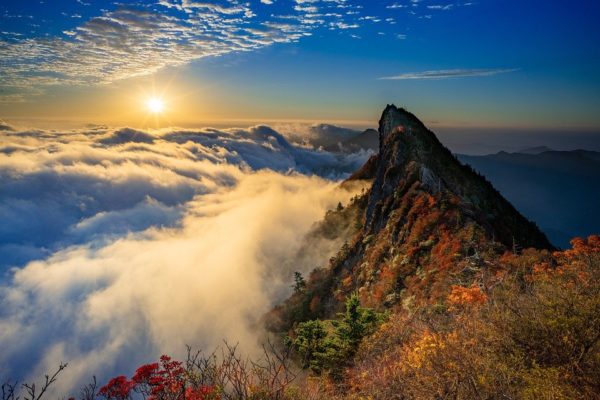 Personal Cosmologies
Personal Cosmologies
The creation and realization of a personal cosmology is an element critical for the aspiring druid. For those in misty coastal and forested regions, the sea/earth/sky triad may be the most appropriate. For those living in the mountains of the desert, it may be more useful to adapt features from the Grail stories that involve the quest for Sarras, the sacred city in the desert, combined with astronomical alignments, should any exist. While it is possible to work within a cosmology and space that is disconnected from one’s environment, there is something profoundly unreal about trying to describe features or seasons that one doesn’t experience. The Pagan “Eightfold Wheel of the Year”, developed by Ross Nichols and Gerald Gardner, works well in Northern climes that have four seasons. The eight fold pattern is of little or no value in tropical, Mediterranean or desert climates. The best advice for many would-be druids is to throw out all references apart from the Farmer’s Almanac (or a copy of Sky and Telescope), get a thermometer and barometric pressure gauge, buy an astrolabe, a basic drafting set with compass, graph paper and protractor, maps and a good compass, a box of 96 crayons and art pads to record the changing plants and seasons in sketches, and to try sleeping under the open sky for as many nights as possible.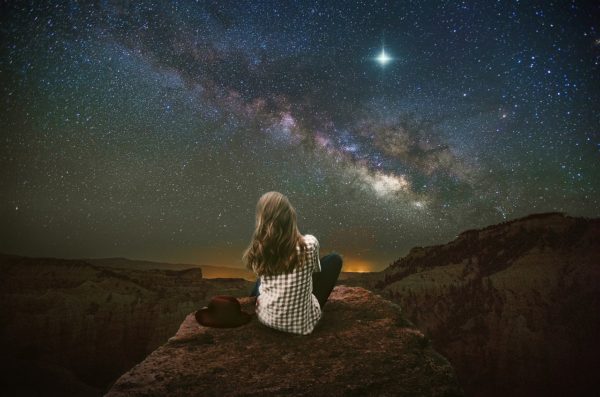 A meditative musical instrument, such as the harp, zither or dulcimer may also serve the aspiring druid as a means of expression. Astronomical phenomena, such as meteor showers, can be used as ritual markers, and easily work into certain elements of the druid’s personal cosmology, though this may require some flexibility and close observation. (There are hints that some traditional tales in the Irish materials may preserve cosmological features, and ‘Hamlet’s Mill’ is the classic work that covers this topic.) While in the earliest stages of their work, reference books on Ogham or similar topics may be of value, experience and meditation will ultimately prove to be the best guide to a cosmology. A cosmology is a framework against which the Greater and Lesser mysteries can be appreciated within the local expression of Sovereignty that the druid lives in, although these Mysteries can never be fully explained. Cosmologies are a way to make the Sacred more obvious within life as it is lived. Years of meditation, music and dreams may be needed in order to establish a mythic geography, a backdrop against which one’s life can be more fully appreciated and explored.
A meditative musical instrument, such as the harp, zither or dulcimer may also serve the aspiring druid as a means of expression. Astronomical phenomena, such as meteor showers, can be used as ritual markers, and easily work into certain elements of the druid’s personal cosmology, though this may require some flexibility and close observation. (There are hints that some traditional tales in the Irish materials may preserve cosmological features, and ‘Hamlet’s Mill’ is the classic work that covers this topic.) While in the earliest stages of their work, reference books on Ogham or similar topics may be of value, experience and meditation will ultimately prove to be the best guide to a cosmology. A cosmology is a framework against which the Greater and Lesser mysteries can be appreciated within the local expression of Sovereignty that the druid lives in, although these Mysteries can never be fully explained. Cosmologies are a way to make the Sacred more obvious within life as it is lived. Years of meditation, music and dreams may be needed in order to establish a mythic geography, a backdrop against which one’s life can be more fully appreciated and explored.
This Universe is organic, filled with irrational numbers and paradoxes, as is any cosmology that usefully reflects it. While a laundry list may not have value in the quest for the Grail or druidry, there are traditional artistic and ritual methodologies that are appropriate to druidry. If one takes the view that polytheistic cosmologies need not conflict, the world then becomes large enough to have many sacred centers, places where Greater and Lesser mysteries dwell and bestow gifts on those who respectfully seek them out and honour them.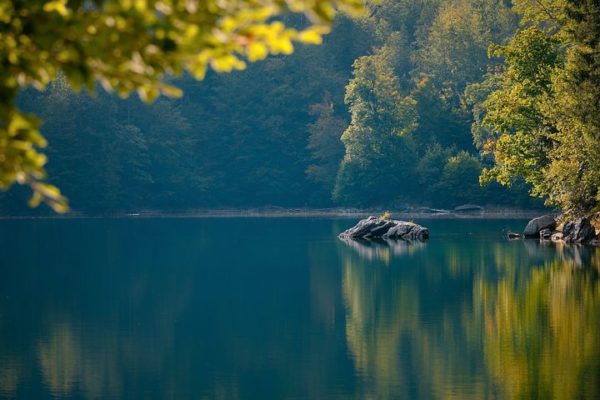 The concept of the sacred pilgrimage is one shared by most cultures, where the seeker goes to a place of power in order to receive a blessing or insight. There are rock faces near the sacred Duwammish river, near Seattle, where the world was re-made and Spring was released into the world, Mount Meru is a cosmic axis for many Asians, the lost caves of the White Spring of Glastonbury is where the secrets of the Underworld live – these are three examples of places worthy of consideration for the aspiring druid. Why should a potential druid care about anything beyond Ireland, Scotland, Ireland, Wales, Brittany or England? Because many potential druids do not live in these lands, nor are they necessarily related by recent ties of cultural heritage or ancestry to the peoples of these lands. If druidry is based on universal principles and is a philosophy of earth, stars and trees, then local features have immense power to shape the grammery and body of the druid. It may even benefit druids living in the British Isles to reexamine their own environments for clues towards making a better druidry.
The concept of the sacred pilgrimage is one shared by most cultures, where the seeker goes to a place of power in order to receive a blessing or insight. There are rock faces near the sacred Duwammish river, near Seattle, where the world was re-made and Spring was released into the world, Mount Meru is a cosmic axis for many Asians, the lost caves of the White Spring of Glastonbury is where the secrets of the Underworld live – these are three examples of places worthy of consideration for the aspiring druid. Why should a potential druid care about anything beyond Ireland, Scotland, Ireland, Wales, Brittany or England? Because many potential druids do not live in these lands, nor are they necessarily related by recent ties of cultural heritage or ancestry to the peoples of these lands. If druidry is based on universal principles and is a philosophy of earth, stars and trees, then local features have immense power to shape the grammery and body of the druid. It may even benefit druids living in the British Isles to reexamine their own environments for clues towards making a better druidry.
Tools for Aspiring Druid-Poets
What better place to begin the druidic quest than with an appreciation of the Songs of Creation? Most cultures have an extant epic or collection of stories around the theme of sacred history, whether it is Genesis, the collection known as the Kalevala, the Eddas, the Book of Invasions, the Songs of Firdosi, etc. Note that it isn’t always the Universe that is being created: some stories seem to assume that the World pre-exists the time of the Greater and Lesser Mysteries.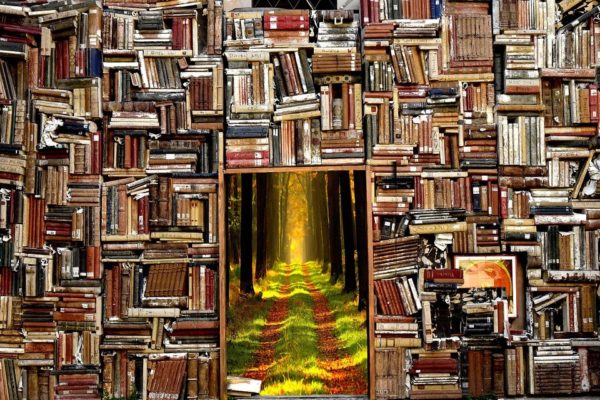 These songs have many things in common–they are sung or chanted, not silently read in a printed book. Hebrew prophets intoned the sacred words of power, druids used the Dark Speech, the poems of the Kalevala were sung by two singer-musicians, and the Songs of Firdosi are chanted to this day in Iran. The close connection to music should be considered as well, particularly in light of the harp traditions of Scotland. Unlocking the word-hoards of poetry, being led “from a word to a word” requires more than simple memorization of single words or phrases. Oral poetry is constructed on themes that are expressed in phrases, known as “The Formula”. An oral phrase would be of the form “whisperingly, in trance, she spoke Thus to the drum of the Spirits…” (example is from the “Book of the Nisan Shamaness”, a traditional Manchu tale.) The filidh must be sufficiently skilled to swiftly and succinctly choose and shape phrases for a briocht (blessing) or lorica (breastplate) at a moment’s notice.
These songs have many things in common–they are sung or chanted, not silently read in a printed book. Hebrew prophets intoned the sacred words of power, druids used the Dark Speech, the poems of the Kalevala were sung by two singer-musicians, and the Songs of Firdosi are chanted to this day in Iran. The close connection to music should be considered as well, particularly in light of the harp traditions of Scotland. Unlocking the word-hoards of poetry, being led “from a word to a word” requires more than simple memorization of single words or phrases. Oral poetry is constructed on themes that are expressed in phrases, known as “The Formula”. An oral phrase would be of the form “whisperingly, in trance, she spoke Thus to the drum of the Spirits…” (example is from the “Book of the Nisan Shamaness”, a traditional Manchu tale.) The filidh must be sufficiently skilled to swiftly and succinctly choose and shape phrases for a briocht (blessing) or lorica (breastplate) at a moment’s notice.
As was true of the Japanese master storytellers, endless and powerfully chanted repetition of an epic oral poem or story is the best training here.The beginner develops an appreciation of the rhyme schemes, dynamics and story elements in a fashion not possible in simple reading. As Alfred Lord, author of “Singer of Tales” demonstrated some years ago, within oral poetry there is no Ur-poem or song, no single true example of any story from which all other variants spring. There is simply the poem being chanted at a particular moment, in front of a specific audience. Length, order, story detail are all variables to be played with by the ollamh, or ritual poetic specialist. The extant texts are a translation, a translation from the spoken to written word. (Even if the monks in the monasteries invented the stories, they were invented out of an Irish background, one that oddly enough corresponds to the sacred iconography from the rest of Northern Europe.) As is the case with all translations, something vitally important is lost in the process. Most of us are working in English, rather than Manx, Cornish or Breton as a native language, and have thereby lost the original meters and rhyme-schemes in the native tongue. Poetry, like prose, cannot be translated but only re-interpreted into a foreign language. It is to the benefit of every potential druid to spend some time struggling with the original language, if only to appreciate its power and graces.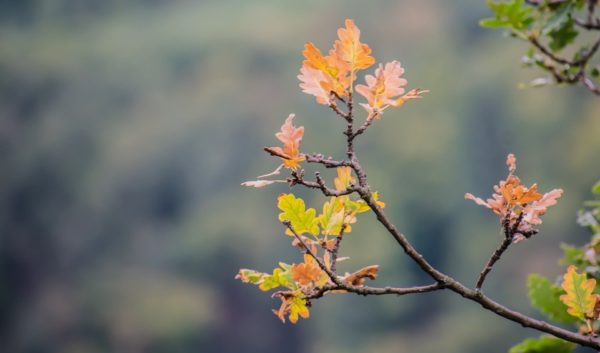 Having resolved to work in English (for the 97% of you reading this), it becomes important to recognize the tools of spoken, rather than written English and its use in ritual story-telling. Fortunately, Dr. Seuss books are widely available. (If a druid cannot tell children’s stories to their pet rock, nephew or cousin, how can they hope to aspire to greater magics?) Initial training should consist of almost endless repetition, until these simple rhyme schemes become second nature. Moving past Dr. Seuss, many traditional stories preserve ritual features–most stories have a clear beginning and ending, with the initial piece of the story setting out a cosmology and world view. There generally is a hero, a task of some sort, and a resolution before the dissolution of the story-space by the teller. Astute modern story tellers have listeners hold a rope during the telling, lower lighting, use props, voice features (volume, speed, pitch, inflection, etc.) as devices to accentuate the power of the story. The most astute tellers will adjust the story to the tolerance of the audience, altering descriptions, locale and compressing or expanding the elements of the story as needed. For the advanced druid, a harpist, zither or dulcimer player accompanying the druid or story reciter can create an authentic atmosphere for trance induction and story-telling in a traditional Scottish and Irish context.
Having resolved to work in English (for the 97% of you reading this), it becomes important to recognize the tools of spoken, rather than written English and its use in ritual story-telling. Fortunately, Dr. Seuss books are widely available. (If a druid cannot tell children’s stories to their pet rock, nephew or cousin, how can they hope to aspire to greater magics?) Initial training should consist of almost endless repetition, until these simple rhyme schemes become second nature. Moving past Dr. Seuss, many traditional stories preserve ritual features–most stories have a clear beginning and ending, with the initial piece of the story setting out a cosmology and world view. There generally is a hero, a task of some sort, and a resolution before the dissolution of the story-space by the teller. Astute modern story tellers have listeners hold a rope during the telling, lower lighting, use props, voice features (volume, speed, pitch, inflection, etc.) as devices to accentuate the power of the story. The most astute tellers will adjust the story to the tolerance of the audience, altering descriptions, locale and compressing or expanding the elements of the story as needed. For the advanced druid, a harpist, zither or dulcimer player accompanying the druid or story reciter can create an authentic atmosphere for trance induction and story-telling in a traditional Scottish and Irish context.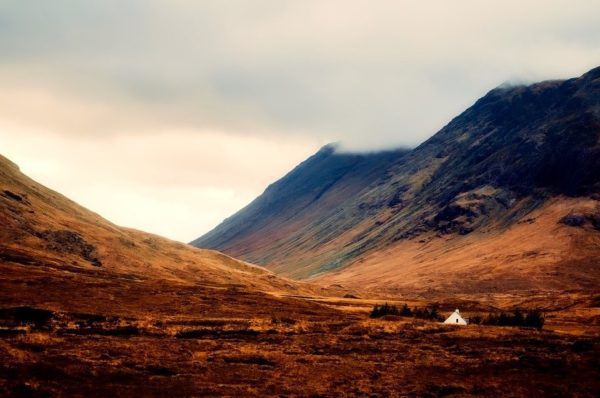 Creating a local druidic cosmology
Creating a local druidic cosmology
As an example of how to create a local druidic cosmology, let’s take the case of a would-be druid, a young lass with the magical name of Velociraptrix, who lives in Fabens, Texas. She is a 25 year old female Mexican-American with a B.S. in nursing from the University of Texas, and has taken a number of classes in astronomy and anthropology for her minor. As a member of a Mexican pagan dance group, she has a background in ritual and dance. The first step she takes in establishing her druidic cosmology is to note that “El Paso del Norte” has been the mountain pass that traders and travelers have used for thousands of years in transporting goods overland from the old Mexican cultures to the Pueblo tribes. Her second piece of information is that an important archaeological site is Hueco Tanks, where hundreds of rock paintings of ancient spirits are depicted. These rock figures seem to be artistically linked to the high civilizations of ancient Mexico and the Pueblos. And, the Rio Grande river runs (meanders would be a more accurate description this era) through the region, forming a natural barrier and the main source of water, aside from other minor streams and some springs. She notes the incursion of non-native plants into the desert and decides to donate time to a group that works to restore the Southwest desert to its natural state. The book “Cultures of Habitat” by Nabhan provides her with relevant information about desert plants and offers further clues for her cosmology. Living in a desert environment with less than nine inches per year of rain and a shortage of most of the Ogham trees (though there are forests in New Mexico a quick drive away), she decides to build her focus around ritual waters. A quick trip to the USGS office provides her with detailed maps of springs.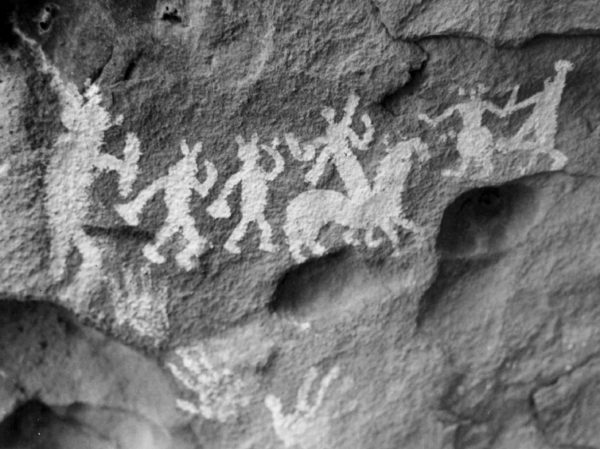 On a hunch, she calls David Eidelmann, a professor of archaeology at UTEP to see if ritual travelers carried some emblem of their office. She was right, they carried a ritual staff. Her next step is to try and map the route that the traders would have used (parrot feathers went North to Hopi territory, turquoise went South to Mexico.) She then checks with several folkloric experts (her aunts, a grandmother and several older cousins) to see if there are any ritual restrictions on traveling, and discovers a legend about a powerful spirit who cries at night, best avoided. As a student of history, she is fully aware of the linkage between human sacrifice on a mass scale and some of the high cultures of Mexico. Just as a modern Celtic or Roman pagan reconstructionist would eschew human sacrifice as a barbaric custom, she resolves to stay away from spirits and places associated with human sacrifice or bloodletting, while acknowledging the principle that symbolic sacrifice brings light into the world, as is the case in many religions.
On a hunch, she calls David Eidelmann, a professor of archaeology at UTEP to see if ritual travelers carried some emblem of their office. She was right, they carried a ritual staff. Her next step is to try and map the route that the traders would have used (parrot feathers went North to Hopi territory, turquoise went South to Mexico.) She then checks with several folkloric experts (her aunts, a grandmother and several older cousins) to see if there are any ritual restrictions on traveling, and discovers a legend about a powerful spirit who cries at night, best avoided. As a student of history, she is fully aware of the linkage between human sacrifice on a mass scale and some of the high cultures of Mexico. Just as a modern Celtic or Roman pagan reconstructionist would eschew human sacrifice as a barbaric custom, she resolves to stay away from spirits and places associated with human sacrifice or bloodletting, while acknowledging the principle that symbolic sacrifice brings light into the world, as is the case in many religions.
Velociraptrix has established that her cosmology is bounded by the Rio Grande, the Guadalupe mountains and the historically used paths running roughly on a NE/SW line from the middle of Mexico through the mountain pass and the Pueblos of New Mexico. Her focus is on sacred waters, and their emergence from the desert. Given the ideal observation conditions for astronomy, she decides to spend some time seeing if her relatives, the Pima Indians have any star lore that might be useful to her. She makes a note to take an extension course or two in ethnobotany and an advanced camp in desert survival, which may come in handy once she begins walking the lands that are sacred to her. Other details will emerge as she meditates, walks, sings to the night sky and sleeps on the mountains.
She will pull her lyrical inspiration from contemporary and classical Southwestern and Mexican poetry, making it her own over time.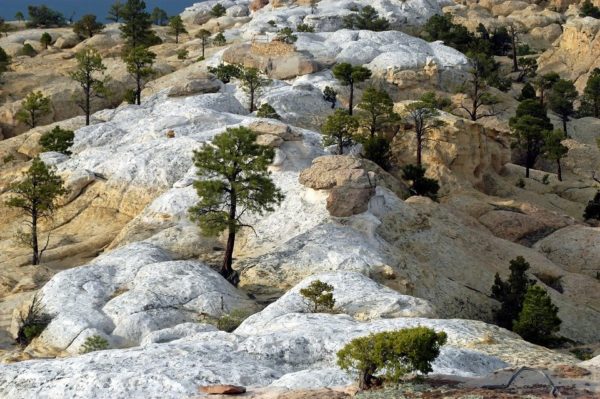 As she’s bilingual in Spanish and English, she will write chants in either language, depending on her mood, and has enough of a ritual dance background to adopt some of the rhythms of the huehuetl (the drum of the ancestors) to the group rituals she’s planning for her (eventual) Grove. She decides to draw from some of the structural richness of the Hermetic tradition for the grove, and buys a copy of “Inside a Magical Lodge” by John Michael Greer, an OBOD druid and hoodoo hermeticist. Most Mesoamerican cosmologies have multiple creations of the world, and the Desert Southwest tribes have a myth of first emergence from a holy place as central to their religious practices. Prayers and dances for rain, good crops and health are important as well, so Velociraptrix decides to incorporate staff or stick dances, turquoise and parrot feathers into her practices. For her initial altar (a decorated box of local wood that is bolted to the wall and folds down to open as an altar) she chooses an arrangement of rocks, feathers and turquoise, with a white porcelain bowl with rain symbols on it to represent celestial waters. She makes a note to schedule some time for rain rituals late in the year, and will ultimately make a wall altar for each direction and element.
As she’s bilingual in Spanish and English, she will write chants in either language, depending on her mood, and has enough of a ritual dance background to adopt some of the rhythms of the huehuetl (the drum of the ancestors) to the group rituals she’s planning for her (eventual) Grove. She decides to draw from some of the structural richness of the Hermetic tradition for the grove, and buys a copy of “Inside a Magical Lodge” by John Michael Greer, an OBOD druid and hoodoo hermeticist. Most Mesoamerican cosmologies have multiple creations of the world, and the Desert Southwest tribes have a myth of first emergence from a holy place as central to their religious practices. Prayers and dances for rain, good crops and health are important as well, so Velociraptrix decides to incorporate staff or stick dances, turquoise and parrot feathers into her practices. For her initial altar (a decorated box of local wood that is bolted to the wall and folds down to open as an altar) she chooses an arrangement of rocks, feathers and turquoise, with a white porcelain bowl with rain symbols on it to represent celestial waters. She makes a note to schedule some time for rain rituals late in the year, and will ultimately make a wall altar for each direction and element.
Velociraptrix’s Resource List
Druidcraft Philip Carr-Gomm Druid Mysteries Philip Carr-Gomm The Book of Druidry Ross Nichols, edited by Carr-Gomm A Scattering of Jades: Stories, Poems and Prayers of the Aztecs Dr. T.J. Knab, translated by Thelma D. Sullivan Warrior for Gringostroika Guillermo Gomez-Pena Cultures of Habitat Gary Paul Nabhan Dreamtime Hans Peter Duerr, translated by Felicitas Goodman Storytelling: Process and Practice Norma J. Livo, Sandra A. Rietz The Singer of Tales Albert B. Lord Inside a Magical Lodge: Group Ritual in the Western Tradition John Michael Greer